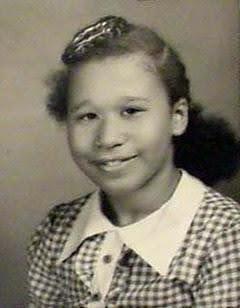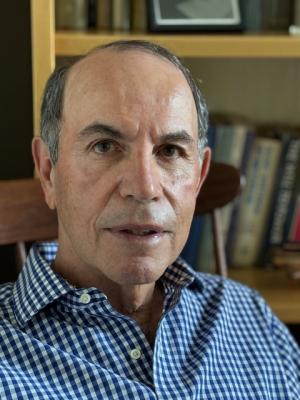Sometimes the path to justice begins at a bus stop ... assuming, of course, Blacks can even get on a bus. In 1950, that racial reality confronted 6-year-old Shirley Barbara Bulah and 13-year-old Ethel Louise Belton. Their race barred them from riding on whites-only school buses; it also excluded them from attending whites-only schools in Delaware.
June 4, 1950: In an address given to the graduating class at Salesianum School, Vice Chancellor Collins Seitz implored Delawareans to first honor past principles and then condemn present practices: “How can we say that we deeply revere the principles of our Declaration and our Constitution and yet refuse to recognize those principles when they are to be applied to the American Negro in a down-to-earth fashion?” The Court of Chancery jurist then upped the accusatory ante: “During election campaigns and in Fourth of July speeches, many speakers emphasize that these great principles apply to all Americans. But when you ask many of these same speakers to act or vote so that those great principles apply in fact to Negro-Americans, you may be accused of being unfair, idealistic or even pro-Communist.”
In time, three names – Bulah, Belton and Seitz – would be joined together and change the arc of racial justice in Delaware. But that time had yet to arrive. Consequently, Shirley Bulah, Ethel Belton and other African American students could not ride on public school buses or attend white schools. The pull of the past, however, was being tested the day that Louis Redding, the Delaware NAACP lawyer, entered the picture, along with the young Jack Greenberg. The two civil rights lawyers had recently prevailed in ordering the University of Delaware to stop denying admissions to Blacks – it was a first in the nation. Judge Seitz was the jurist behind the wheel of that constitutional ruling. Now, Redding and Greenberg had their eyes fixed on segregation practices in K-12 schools. They needed a case to test a 1935 Delaware law that declared that “the schools provided shall be of two kinds; those for white children and those for colored children.”
Enter the Bulah family. In rural Hockessin, Sarah Bulah, her husband and their adopted daughter Shirley lived two miles from the one-room Black students’ school. Sarah wanted the school bus that went by her door to transport Shirley to a one-room colored elementary school, Hockessin School 107C. That school was on the way to the whites-only, four-room Hockessin School 29. Mrs. Bulah sought out Redding when her pleas to state officials were denied Oct. 10, 1950. Savvy as he was, Redding was no compromise man. Predictably, he was adamantly uninterested in getting a white kids’ bus to take her daughter to a Jim Crow school. Rather, Redding would take the case but only to integrate the white school. “If you go all the way,” he told her, “I’ll take the case. Don’t be like so many others that start and then stop.” Without pause, Mrs. Bulah replied: “I’m here for the duration.” Though the state made some token patch-up changes to avoid a lawsuit, school board officials refused to integrate the school bus. The Bulahs likewise refused to drop the matter. Case on! Bulah v. Gebhart. Francis B. Gebhart was the main defendant in the actions against the state school board of education.
Enter Ethel Louise Belton. She “had a congenital heart condition that made her 50-minute trip to Howard High School exhausting. She walked many blocks,” as Kathleen Marie Doyle has noted, “and took several bus transfers. At the end of the school day, she walked nine-and-a-half blocks to [a segregated vocational school] to take a typing class because Howard ... did not offer typing classes.” Though Claymont High School was closer to her home, it was illegal for her to attend that school. Unlike the run-down Howard School in Wilmington, Claymont was spacious and well-maintained. When it came to curricular offerings, class size and teacher credentials, the stamp of inequality was glaringly apparent. After their complaints to school officials failed, Ethel Lee Belton (Ethel Louise’s mother) and 11 other Black high school students who lived in Claymont asked Redding for help. Redding and Greenberg immediately realized the two schools, though separate, were not equal; that demonstrable fact invited constitutional challenge. Case on! Belton v. Gebhart.
When Judge Seitz drew the case, he did what he had done before in the University of Delaware desegregation case – he visited the four schools and conducted detailed comparisons. Having done so, he concluded that even under the infamous 1896 Plessy v. Ferguson Supreme Court ruling there was “an existing and continuing violation of the separate-but-equal doctrine.” Hence, he ordered the immediate integration of Hockessin School 29 and Claymont High School – it marked yet another national first. The equality principle Seitz championed was affirmed by the Delaware Supreme Court and then by the U.S. Supreme Court – it was like a Western Union telegram delivered to an unexpecting nation.
Though equal educational justice ceased to be a far-fetched ideal, the push for full equality remained a prolonged struggle. For example, and as Dr. Lanette R. Edwards has observed: “Teachers at Hockessin 29 overtly and venomously refused to teach” Black children.
The past wasn’t over. Hence Judge Seitz’s cautionary admonition: “We must be patient but persistent [since] what we are doing must be done.”




















































